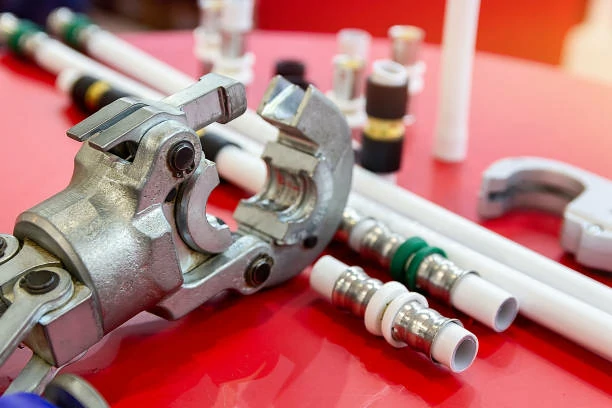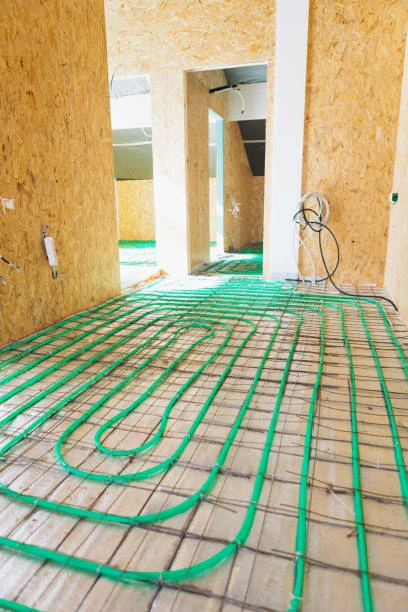Introduction to PEX Piping
PEX, or cross-linked polyethylene, is a type of flexible plastic piping used for water distribution in homes and commercial buildings. It has gained popularity due to its ease of installation, durability, and resistance to corrosion and scale buildup. Unlike traditional materials such as copper or PVC, PEX is highly flexible, which allows it to be bent easily without the need for fittings. This characteristic reduces the chances of leaks and makes PEX ideal for complex plumbing layouts. PEX is used in various applications, including potable water supply, radiant heating systems, and even outdoor sprinkler systems.
Advantages of PEX Piping
PEX piping offers several advantages over traditional materials. First, its flexibility allows for fewer fittings, reducing the likelihood of leaks. It can be easily installed in tight spaces and around corners, which saves both time and labor costs. PEX is also resistant to freezing temperatures, which reduces the risk of pipes bursting in cold weather. It is less prone to scaling and chlorine damage, making it ideal for areas with hard water. Additionally, PEX is durable, can handle both hot and cold water, and is cost-effective compared to other materials like copper and CPVC.
Different Types of PEX
There are three main types of PEX: PEX-A, PEX-B, and PEX-C. Each is manufactured using a different process, which affects its properties. PEX-A is the most flexible and resistant to kinking, produced using the peroxide method. It is ideal for residential installations where tight bends are common. PEX-B is created using the silane method and is more rigid, offering better resistance to cold cracking. It is often used in colder climates or commercial applications. PEX-C is produced using an electron beam method and offers the highest resistance to high temperatures and pressure. This type is typically used in larger plumbing systems or industrial settings.

Applications of PEX Piping
PEX piping is versatile and can be used in various applications. One of the most common uses is in residential plumbing for both hot and cold water distribution. The tubing is also ideal for radiant floor heating systems, where warm water flows through pipes embedded in the floor to heat the room. Additionally, PEX is commonly used for snow-melting systems in driveways or walkways. It is also found in outdoor irrigation systems, as it can withstand UV exposure and varying weather conditions. PEX is a preferred material for all these applications because of its ability to resist corrosion and scale buildup while maintaining good flow rates.
Installation and Maintenance of PEX Piping
Installing PEX piping is relatively straightforward compared to traditional materials. PEX does not require any special joints or fittings for most installations, making it easier to handle and cut. It can be installed with simple tools such as crimpers, clamps, or push-fit connectors. For crimp or clamp connections, a tool is used to secure a fitting to the PEX tubing. PEX is also available in coils, which makes it easier to install over long stretches without the need for multiple connections. Maintenance is minimal, as PEX is resistant to corrosion and scaling. However, it’s essential to avoid exposing PEX to direct sunlight for prolonged periods, as UV rays can degrade the material over time. Additionally, proper installation ensures that the system will function reliably for years with minimal maintenance.
Normas mundiales para tuberías PEX
Los tubos PEX cumplen varias normas internacionales para garantizar su seguridad, fiabilidad y rendimiento en diferentes aplicaciones. Entre las principales normas figuran ISO 15875, GB/T 18992 y DIN 16892, cada una de ellas adaptada a regiones y requisitos específicos. ISO 15875 cubre los sistemas de agua caliente y fría, definiendo criterios para las propiedades de los materiales y el rendimiento a distintas temperaturas y presiones. GB/T 18992 se centra en las especificaciones para China, garantizando que los tubos PEX cumplan las normas medioambientales y reglamentarias exclusivas del país. DIN 16892 es específico para Alemania, y garantiza que los tubos PEX cumplen los estrictos criterios de rendimiento y seguridad para el suministro de agua doméstica y calefacción. ASTM F877 y ASTM F2788 se aplican en EE.UU. y establecen requisitos para los tubos PEX utilizados en sistemas de distribución de agua y calefacción hidrónica. En el Reino Unido, BS 7291 y BS EN ISO 15875 regular las especificaciones de las tuberías PEX para diversas aplicaciones de fontanería y calefacción. Por último, CSA B137 cubre las normas canadienses, haciendo hincapié en el rendimiento tanto en sistemas de agua potable como de calefacción. Estas normas mundiales garantizan que las tuberías PEX sean duraderas, seguras y adecuadas para las diversas necesidades de fontanería de los distintos países.
Póngase en contacto con
nectarplus es un fabricante profesional con 30 años de experiencia, dedicado a la producción de tuberías, accesorios y válvulas de plástico de alta calidad. Nuestros productos incluyen válvulas de latón, válvulas PPR, así como diversas tuberías y accesorios para satisfacer las diferentes necesidades de los clientes. Ya sea que necesite tuberías de plomería y drenaje o productos de válvulas. nectarplus puede ofrecerle una amplia gama de productos rentables y de alta calidad para sus proyectos. A continuación encontrará nuestra información de contacto.
Responderemos a su correo electrónico o fax en 24 horas.
Puede llamarnos en cualquier momento si tiene alguna duda sobre nuestra producción.
Pls Mailto: [email protected]

